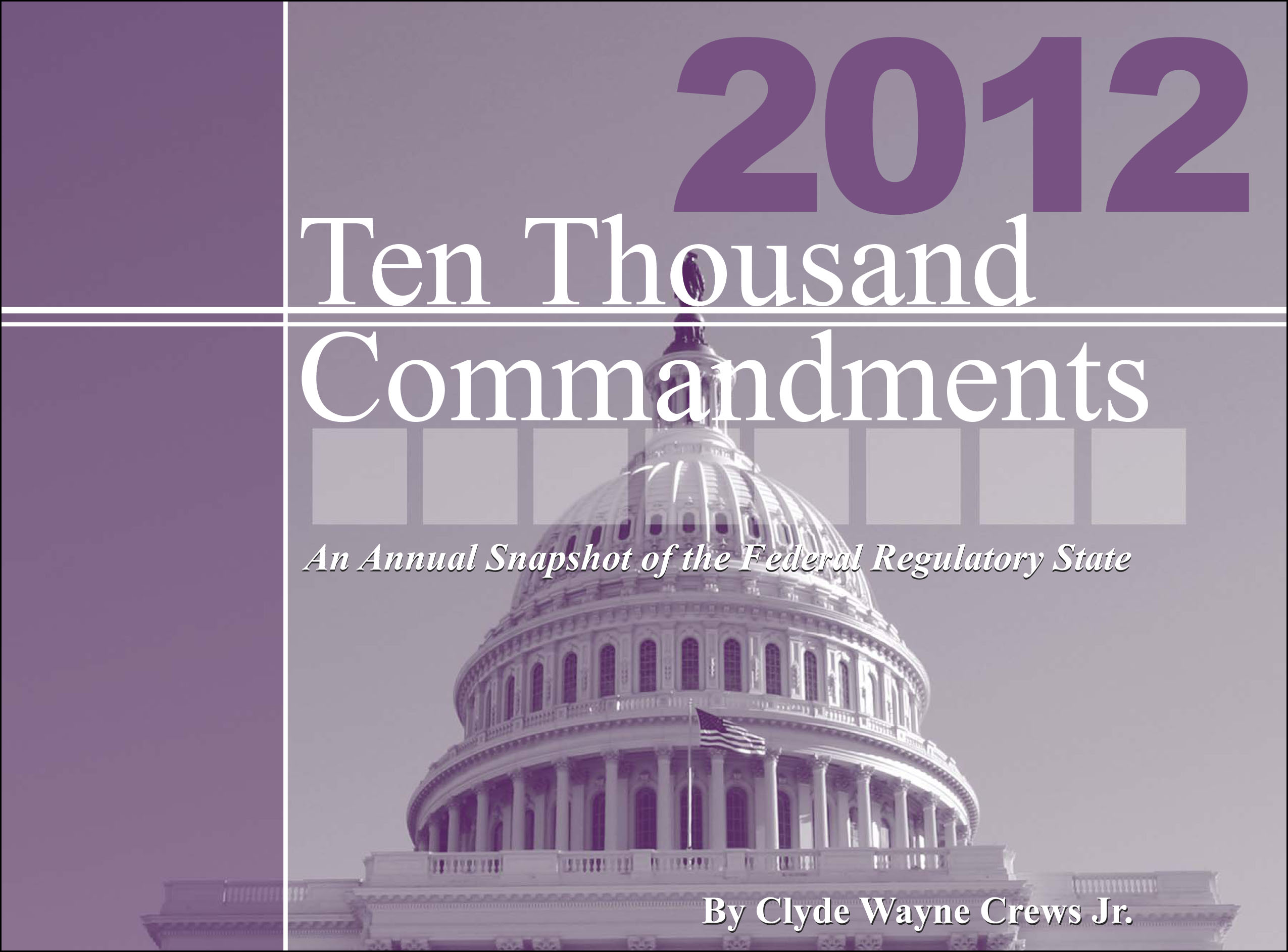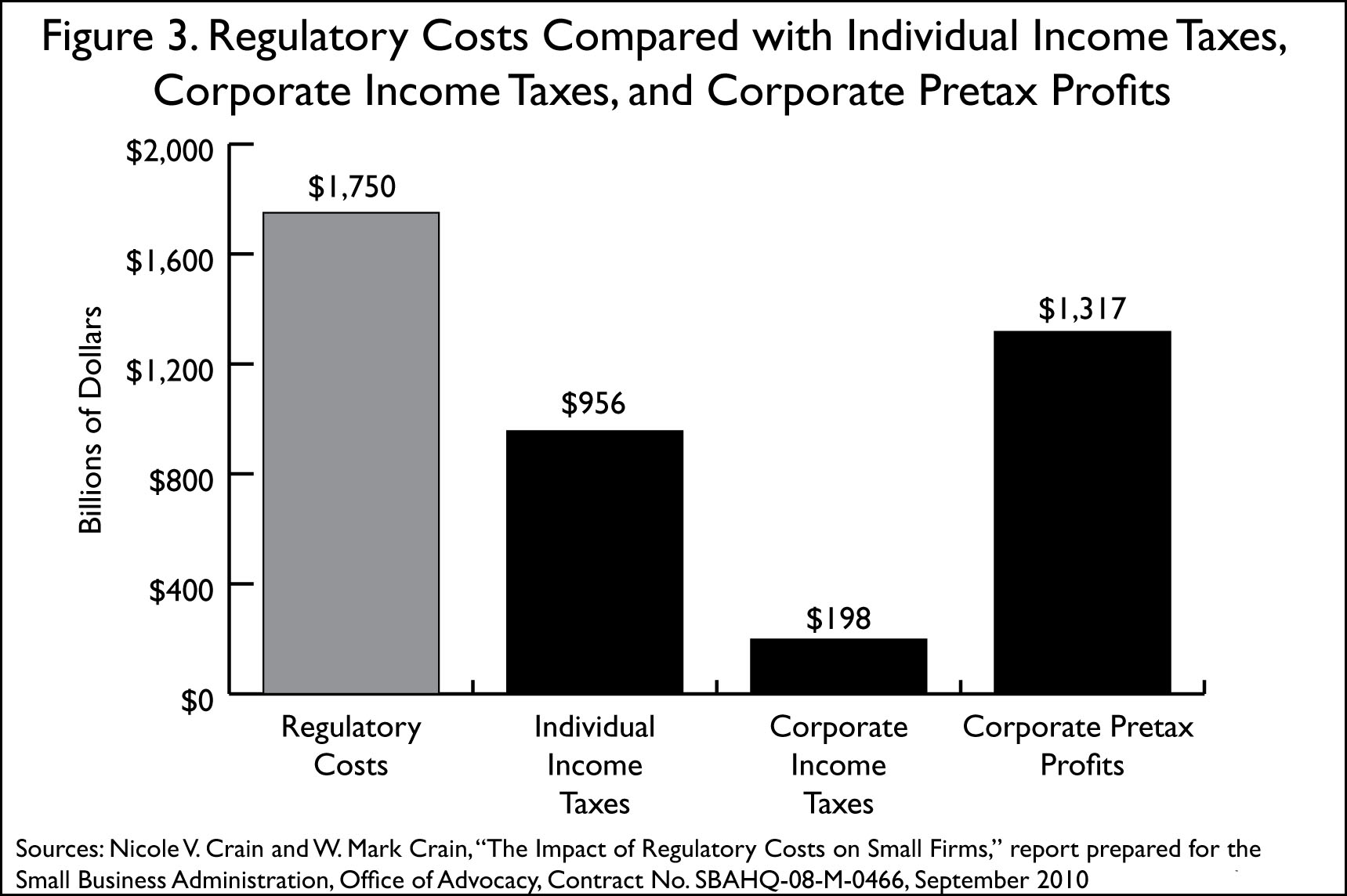Ten Thousand Commandments 2012
An Annual Snapshot of the Federal Regulatory State
Full Document Available in PDF
 The scope of federal government spending and deficits is sobering. Yet the government’s reach extends well beyond the taxes Washington collects and its deficit spending and borrowing. Federal environmental, safety and health, and economic regulations cost hundreds of billions—perhaps trillions—of dollars every year over and above the costs of the official federal outlays that dominate the policy debate.
The scope of federal government spending and deficits is sobering. Yet the government’s reach extends well beyond the taxes Washington collects and its deficit spending and borrowing. Federal environmental, safety and health, and economic regulations cost hundreds of billions—perhaps trillions—of dollars every year over and above the costs of the official federal outlays that dominate the policy debate.
Economics 101 on tax incidence explains how and why firms generally pass along to consumers the costs of some taxes. Likewise, some regulatory compliance costs that businesses face will find their way into the prices consumers pay and into wages earned. Precise regulatory costs can never be fully known because, unlike taxes, they are unbudgeted and often indirect—even unmeasurable as such. But scattered government and private data exist on scores of regulations and on the agencies that issue them, as well as estimates of regulatory costs and benefits. Compiling some of that information can make the regulatory state somewhat more comprehensible. That is one purpose of the annual Ten Thousand Commandments report.
Highlights of the Report:
• Estimated regulatory costs, while “off budget,” are equivalent to over 48% the level of federal spending itself.
• The 2011 Federal Register finished at 81,247 pages, just shy of 2010’s all-time record-high 81,405 pages.
• Regulatory compliance costs dwarf corporate income taxes of $198 billion, and exceed individual income taxes and even pre-tax corporate profits. 
• Agencies issued 3,807 final rules in 2011, a 6.5 percent increase over 3,573 in 2010.
• Of the 4,128 regulations in the works at year-end 2011, 212 were “economically significant,” meaning they generally wield at least $100 million in economic impact.
• 822 of those 4,128 regulations in the works would affect small businesses.
• The total number of economically significant rules finalized in 2011 was 79, down slightly from 2010 but up 92.7 percent over five years, and 108 percent over 10 years.
• Recent costly federal agency initiatives include the Environmental Protection Agency’s Mercury and Air Toxics Standards Rule and the Department of Transportation’s Fuel Economy Standards.